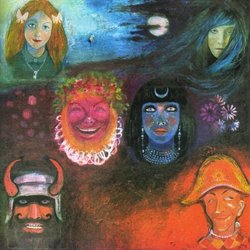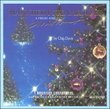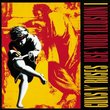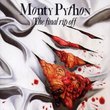| All Artists: King Crimson Title: In the Wake of Poseidon: 30th Anniversary Edition Members Wishing: 10 Total Copies: 0 Label: Discipline Us Release Date: 12/20/2004 Genres: International Music, Pop, Rock, Classic Rock Styles: Europe, Britain & Ireland, Progressive, Progressive Rock, Psychedelic Rock, Album-Oriented Rock (AOR) Number of Discs: 1 SwapaCD Credits: 1 UPCs: 633367050229, 4582213912111 |
Search - King Crimson :: In the Wake of Poseidon: 30th Anniversary Edition
 | King Crimson In the Wake of Poseidon: 30th Anniversary Edition Genres: International Music, Pop, Rock, Classic Rock
2004 reissue of the progressive rock act's 1970 album adds two bonus tracks, 'Cat Food' (single version) & 'Groon' (Cat Food B-side). On the DGM label |
Larger Image |
CD DetailsSynopsis
Album Description 2004 reissue of the progressive rock act's 1970 album adds two bonus tracks, 'Cat Food' (single version) & 'Groon' (Cat Food B-side). On the DGM label Similarly Requested CDs
|
CD ReviewsAn excellent and undersung album Chet Fakir | DC | 12/15/2005 (4 out of 5 stars) "I am so freaking tired of people slagging this album because it follows the same compositional format as the first album In The Court Of The Crimson King: metal song, ballad, mellotron dramatic song. Yes this album's first side (Peace-A Beginning, Pictures of a City, Cadence and Cascade, In the Wake of Poseidon) is in terms of song type essentially an imitation of In The Court Of The Crimson King's first side. But I'm going to break with conventional wisdom here: with the exception of Pictures of a City, I think the songs on Poseidon are just as good, and in some cases better than their counterparts on ITCOTCK. The album opens with an acappella vocal by Greg Lake entitled Peace - a Beginning that is striking in its simplicity and beauty. Following is Pictures of a City which is VERY much like 21st Century S-Man. Both are metallic hard driving songs featuring Robert Fripp's searing guitar. Both have similar (if not identical) instrumental breakdowns, and both are excellent, but 21st Century is in my opinion the more manic and exciting of the two. The next song Cadence and Cascade is a top notch ballad sung by newly hired vocalist/bassist Gordon Haskell who would be more prominantly featured on the following album Lizard. This is his only vocal on the album, the rest are sung by Greg Lake. Cadence and Cascade is simply beautiful with excellent acoustic playing by Fripp, wonderful piano playing courtesy of Keith Tippett and a jazzy flute solo by Ian MacDonald. The mellotron driven In The Wake Of Poseidon is next. It's a suprisingly rocking and dramatic piece reminscent of Epitaph meets In The Court Of The Crimson King from the debut album. But it has a more engaging melody than either of those two songs, and has more lively instrumentation/playing. Fripp's acoustic guitar and Greg Lake's vocals are wonderful as are Mike Giles aggressive drums. The rest of In The Wake Of Poseidon is unique unto itself. Peace - A Theme is a beautiful and short acoustic guitar interlude. Next up is Keith Tippett's manic Cecil Taylor piano workout of Catfood. A song that really seems out of place on this album in it's conflation of free jazz and pop but enjoyable none the less. The long, dark and rambling Mars follows, called The Devil's Triangle on the album perhaps due to copyright issues. Gustav Holtz's composition about Mars the god of war is given a sonically dense and appropriately spooky interpretation by Crimso. The quiet ballad Peace - An End beautifully sung by Greg Lake, closed out the original album. It's a fitting end after the chaos of Mars. The two bonus tracks the Cat Food single and it's B-side Groon are a welcome addition. Groon is an especially interesting jazz/rock? instrumental workout by the Giles brothers on bass and drums and Robert Fripp on electric guitar. Very wierd, very cool. Yes the comparisons to the first album have some validity, the first three songs (not counting the very short vocal of Peace a Beginning) have the same formula: metal scorcher, ballad, dramatic melotron piece. But I happen to think Poseidon is an excellent album in its own right. It might not be as ambitious but it doesn't have the over-earnest sense of buzzkill that permeates the first record. Both Catfood and to a lesser extent Groon act as a welcome and humorous foil to the other oftimes portentious or heavy tunes. The Peace songs are emotionally moving in their humanity and simple dignity. On Poseidon Fripp seems to relax a bit and plays some smoking electric and beautiful acoustic guitar. The music seems just as confident as on the debut album but in general it has loosened up, allowing for some breathing space and release of tension, not to mention humor. In the Wake of Poseidon is an excellent album that has been overshadowed by it's predecessor. Considering the circumstances surrounding this album, it's amazing that it was recorded at all. Essentially everybody in Crimson but Fripp quit the band either prior to, or during the recording sessions. Fripp managed to hold Crimson together long enough to finish this album knowing that the original band was dead. Yet despite the odds he managed to make a very good if not great album. If you are a fan of the original Crimso or the nuttiness that followed on Lizard, there's a very good probability you will like if not love this album." Impressive followup, though strangely familiar Bourbeau | Ann Arbor, MI United States | 04/21/2007 (4 out of 5 stars) "The common complaint about this album is that it is an almost song-for-song clone of the band's debut, "In The Court Of The Crimson King." To make things worse, the band has already begun to fragment and lineup changes had already begun before the disk was completed. However, this is still a great album. "Pictures Of A City" may not have the collective group feel of "21st Century Schizoid Man," but it's just as agressive and has some excellent guitar work. "Cadence And Cascade" is just as pretty as "I Talk To The Wind," and "Cat Food" has a great jazz-rock feel with wild piano work by Keith Tippet. Some songs even do better on this album than the debut's counterparts they are modelled after: I much prefer the title track over 1969's "Epitaph," and "The Devil's Triangle" is a nicer look at the band's improvisational style than the free form ending of "Moonchild." The mellotron work on this album is very nice. King Crimson records are some of the most well-produced albums ever made and I can certainly recommend this one." Come on now, this CD rules Gobi Kalooki | California, USA | 05/17/2007 (5 out of 5 stars) "Okay, this may be similar to their debut album In the Court of the Crimson King, but it is longer and just as good. It has a great variety of tracks from soft and moody (Cadence and Cascade) to funky (Pictures of a City) to just plain fun (Cat Food). This is an essential buy for King Crimson fans."
|

 Track Listings (10) - Disc #1
Track Listings (10) - Disc #1




